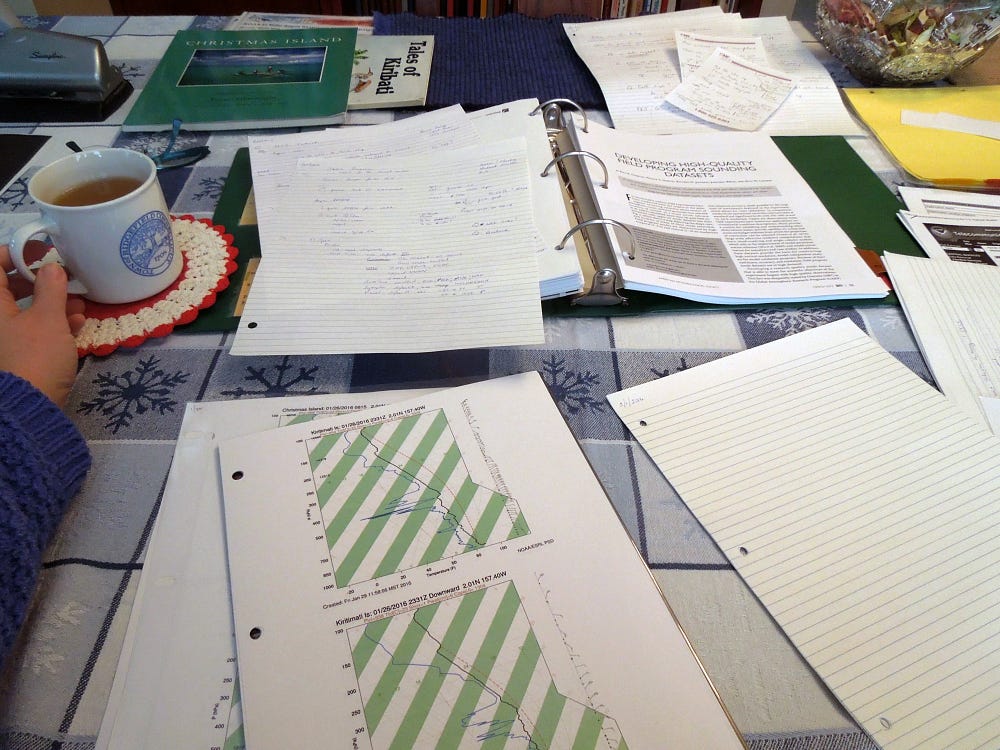Not in the field, but behind the field
February 1, 2016

Not in the field, but behind the field
by Leslie Hartten (CIRES)
February 1, 2016
Between 9 pm Tuesday and 3 pm Wednesday, I received or sent more than five dozen emails related to this project. By 6 pm it had risen to over seven dozen, but I had at least filed all of them appropriately and responded to many that needed my input. I find this staggering.
For the last two weeks, the El Niño Rapid Response mission has taken over my life. It starts before breakfast, and ends after dinner. This is the first time I’ve been intimately involved in a short-lived field experiment, but still … I am, frankly, shocked. It is almost impossible to carve out even one hour of my working day for something else, and equally difficult to get anything accomplished at home. There, I have been reduced to giving myself a check mark for “unloaded dishwasher.”
I have not been alone in this. The forecast team starts gathering material bright and early, so people can discuss what they see at 9 am and brief the flight team at 10:30. Cathy Smith is plotting up the Kiritimati Island soundings and passing them to the forecast team before 8:30 am; the Kiritimati Island operations are still too fluid to allow computer scripts to do this task. Dan Wolfe, Dan Gottas, Tim Coleman, and I are hashing out final details of the forms and software and storage systems that will enable the radiosonde data to be made available to forecasting centers around the world. Barbara Herrli tracked down a PIN buried in an office file, so that a chip card could be used on an island with no chip readers. Bill Otto, Dan Wolfe, and Brian Gorton are checking on supplies: Is there enough helium for the balloons we ended up with? Can we obtain and ship a special cable we didn’t know would be needed?
In trying to make sense of the way my life is suddenly whisked along at breakneck speed, I realized that this is how I was raised. In my first years here I learned this: The first priority is the folks in the field, especially when they’re in an isolated setting. The second priority is the folks about to be in the field, the ones who may fly today or tomorrow, or those who will board the R/V Ronald H. Brown in two weeks. (In this life, “air” or “ocean” can be “field”!) The third priority is the data, getting it out to forecast centers and to curious researchers. Research plans, seminars, on-time meals — these all get pushed aside. “Abandoned” might be a more accurate description.
Warner Ecklund, Dave Carter, Paul Johnston… they taught Babs and me this in the Aeronomy Lab (now the Chemical Sciences Division). In other labs, in other field programs — the names change, but not the priorities. And in just over three weeks it will be I who goes to Kiritimati Island, knowing there are people behind me, and thinking of those who went before.
